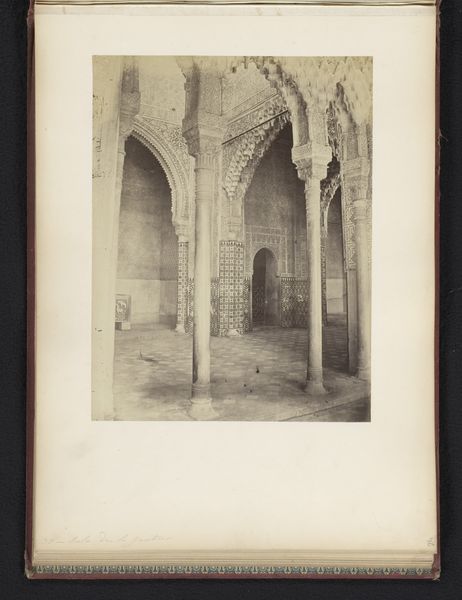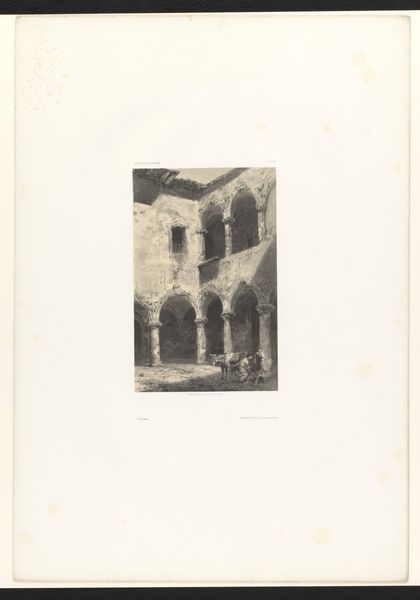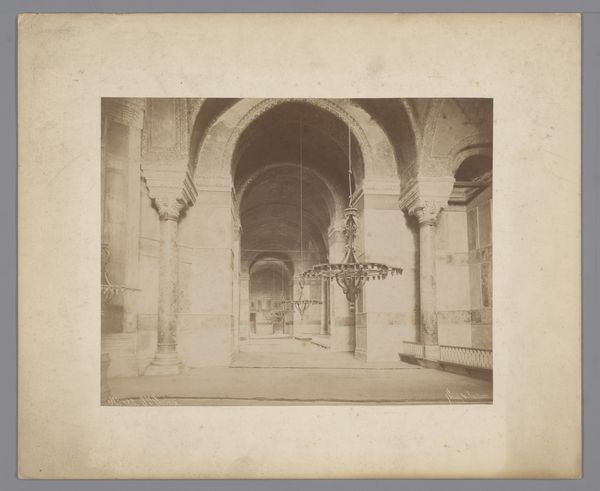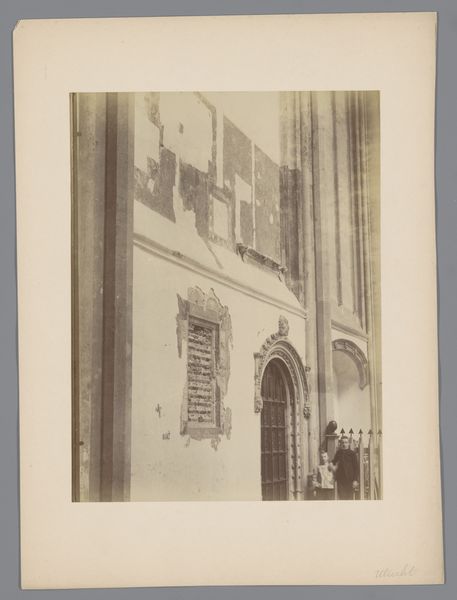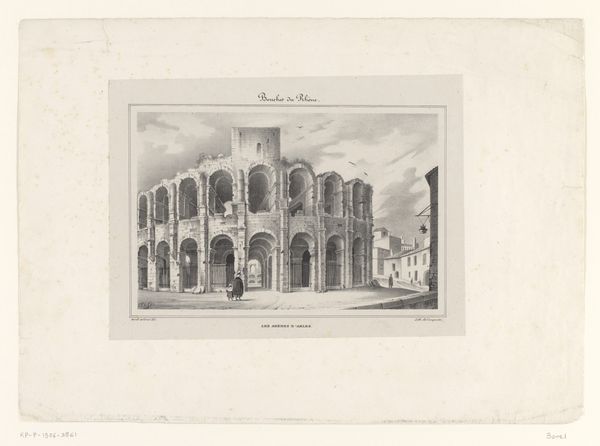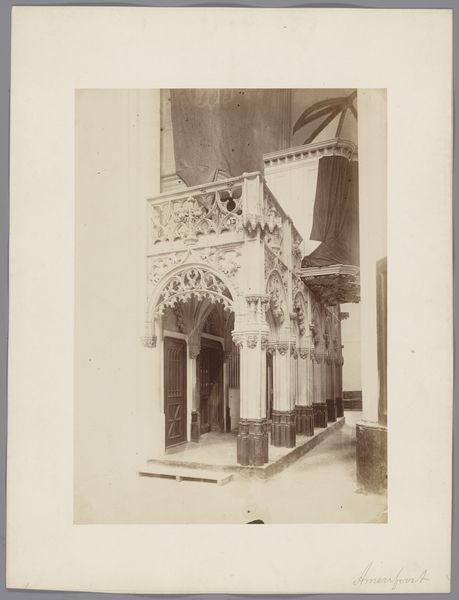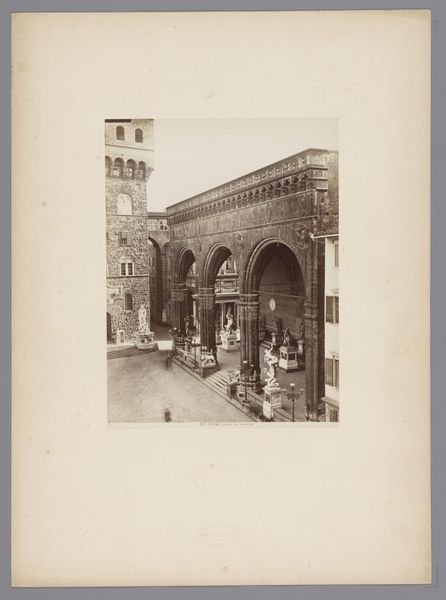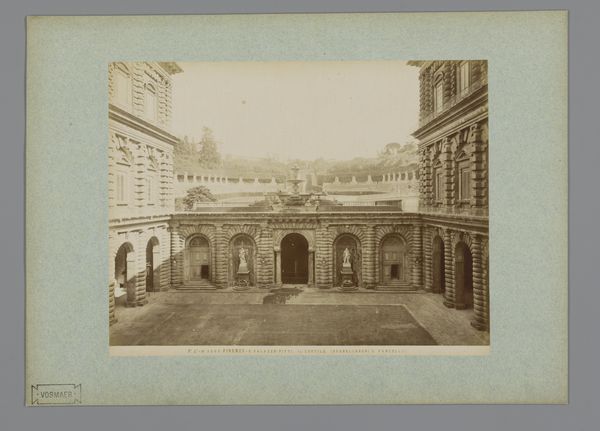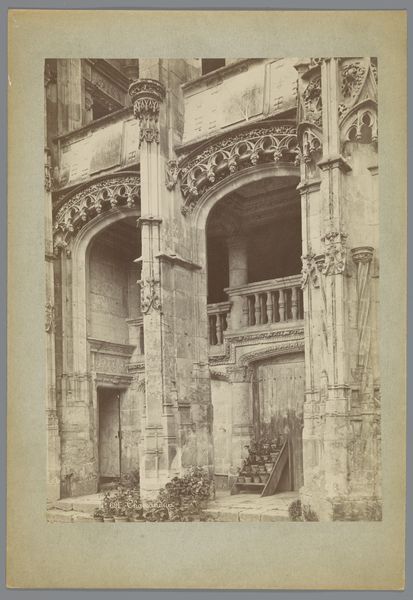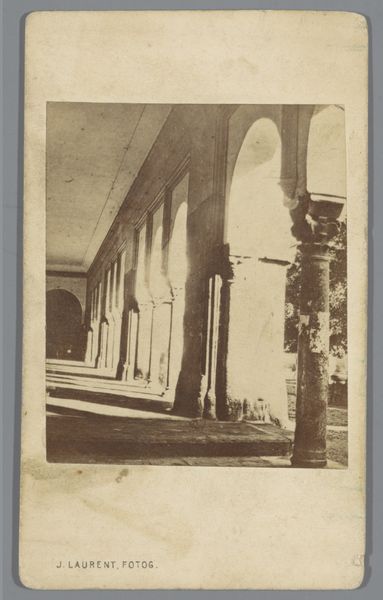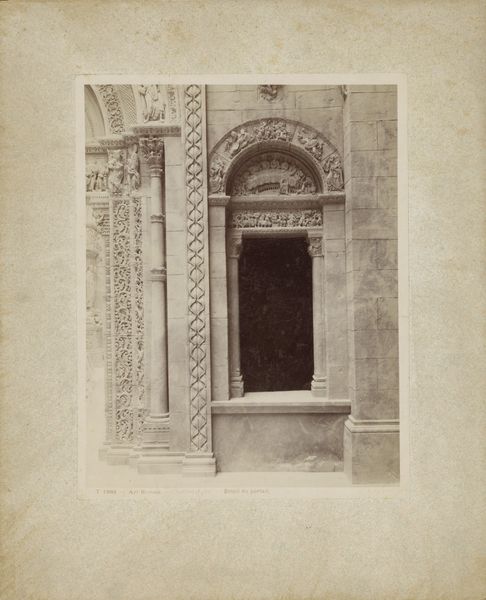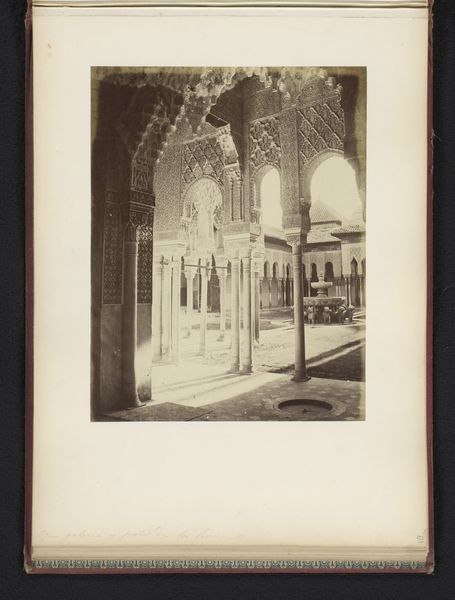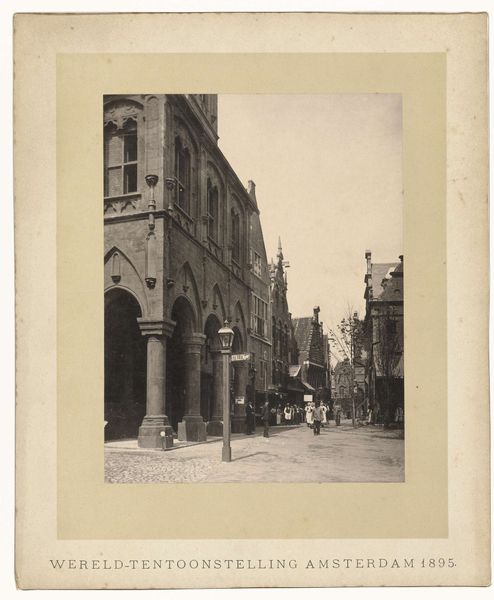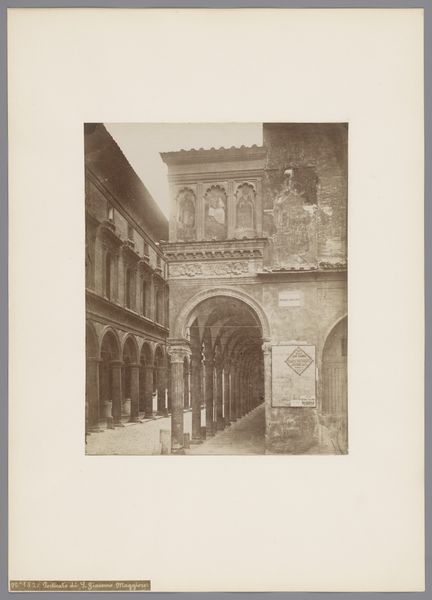![[Place of imprisonment for Emperor Maxmilian of Mexico and soldiers] by François Aubert](/_next/image?url=https%3A%2F%2Fd2w8kbdekdi1gv.cloudfront.net%2FeyJidWNrZXQiOiAiYXJ0ZXJhLWltYWdlcy1idWNrZXQiLCAia2V5IjogImFydHdvcmtzL2JlNjNiYzJmLTYzZmItNDUwNC1hNzNmLTdmNmExZmQ0ZTQxOC9iZTYzYmMyZi02M2ZiLTQ1MDQtYTczZi03ZjZhMWZkNGU0MThfZnVsbC5qcGciLCAiZWRpdHMiOiB7InJlc2l6ZSI6IHsid2lkdGgiOiAxOTIwLCAiaGVpZ2h0IjogMTkyMCwgImZpdCI6ICJpbnNpZGUifX19&w=3840&q=75)
[Place of imprisonment for Emperor Maxmilian of Mexico and soldiers] 1867
0:00
0:00
Dimensions: Image: 14.3 × 11.3 cm (5 5/8 × 4 7/16 in.) Mount: 22.1 × 18.3 cm (8 11/16 × 7 3/16 in.)
Copyright: Public Domain
Curator: This somber architectural print is titled "[Place of imprisonment for Emperor Maxmilian of Mexico and soldiers]," dating to 1867. It’s the work of François Aubert, employing photomontage to create a profound sense of place. Editor: Immediately, I'm struck by the heavy stillness of this image. The monochromatic palette and rigid structure evoke a feeling of confinement, amplified by the weight of history clinging to its walls. Curator: Indeed. Beyond the surface aesthetic, we see a deliberate portrayal of power dynamics at play. Maximilian’s imprisonment embodies the broader narrative of colonialism's impact and resistance. We need to understand the Mexican socio-political landscape during this period to appreciate Aubert’s capture of the crumbling empire. Editor: Symbolically, I observe how the archways—usually emblems of passage or hope—here appear like gaping maws. And those ominous blank frames overhead...It communicates a sense of something deeply lost, perhaps a perverted echo of the triumphal arch. Curator: It speaks to the construction and representation of nationhood in post-colonial Mexico. Consider the context: Maximillian, imposed by European powers, represented a rupture in Mexican self-determination. The visual representation of his prison is therefore deeply tied to concepts of national identity and sovereignty. Editor: Note the textural density! The pitted facade of the building itself tells a story; the very substance whispers an ominous tale, embodying the passage of time and perhaps, even guilt or decay, considering the subjects who were once incarcerated within those walls. Curator: That focus on texture enhances the symbolic weight of the site itself. But it is through lenses like feminist theory and cultural studies that the absences become legible: the absent bodies of the prisoners themselves, the unacknowledged traumas etched into this site’s history. Editor: It also reminds us of the potency of photographs during that period. Think of them as tangible fragments of experience, carrying imprints of both physical space and historical events that resonate for generations to come. Curator: Absolutely, the work's power lies in its engagement with collective memory and its invitation for us to critically examine historical legacies, even today. Editor: After our discussion, it has opened me up to view architecture not as static entity, but an active agent in history. It speaks!
Comments
No comments
Be the first to comment and join the conversation on the ultimate creative platform.
